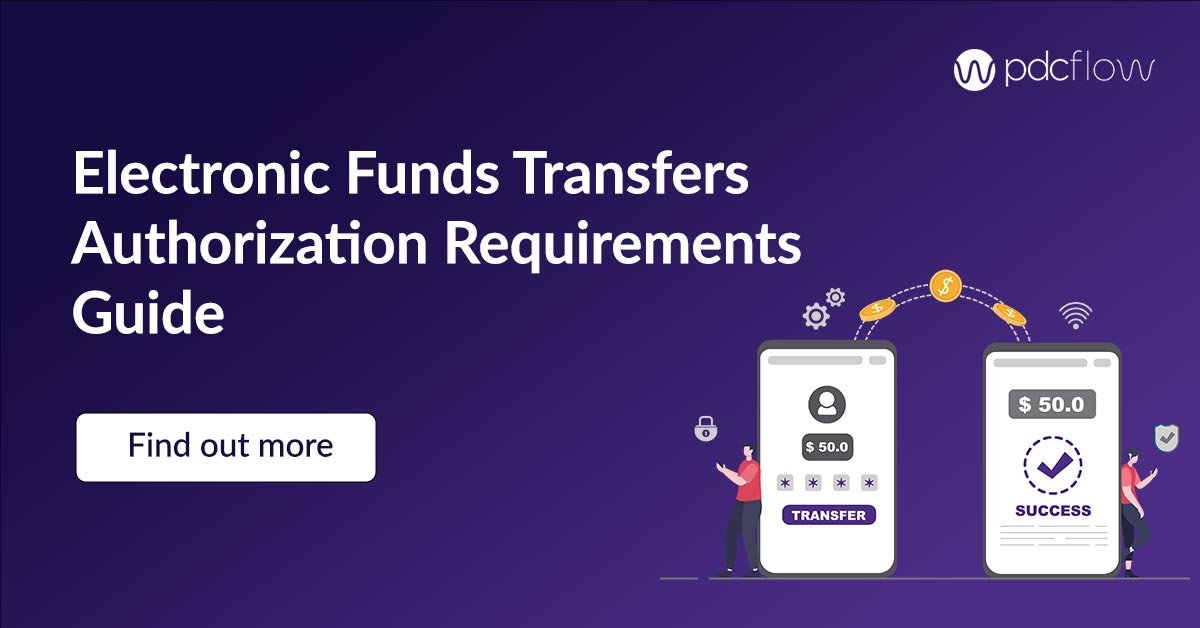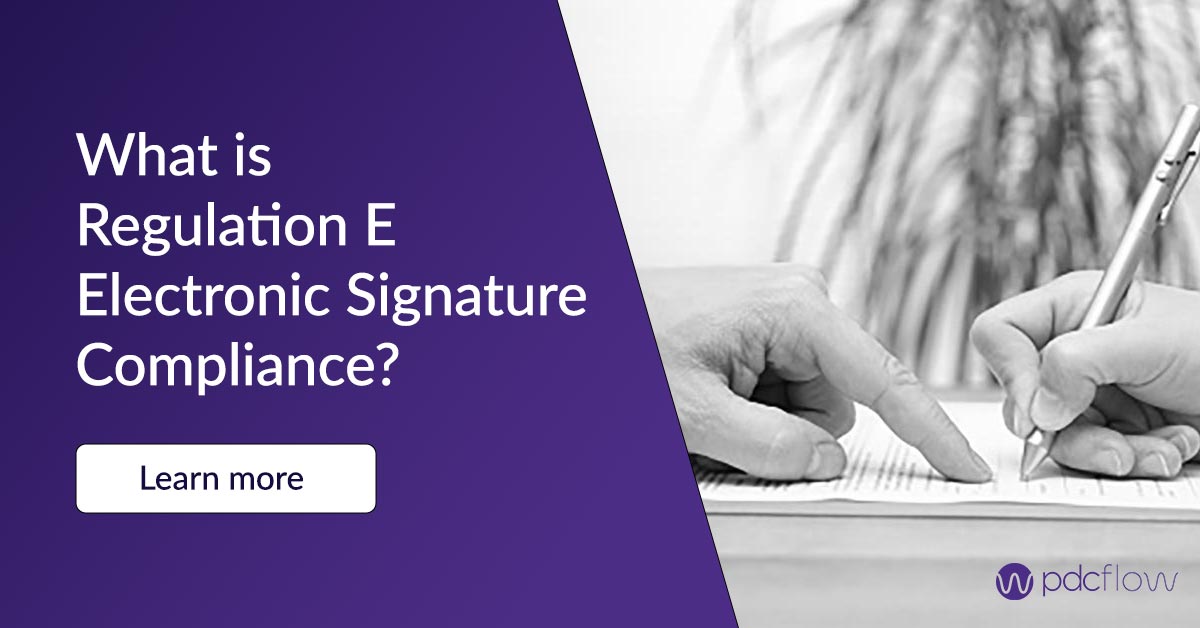What is the Electronic Funds Transfer Act
The Electronic Funds Transfer Act (EFTA) (15 USC 1693 et seq.) of 1978 is intended to protect individual consumers engaging in electronic funds transfers (EFTs).
EFT services include transfers through automated teller machines, point-of-sale terminals, automated clearinghouse systems, telephone bill-payment plans in which periodic or recurring transfers are completed, and remote banking programs.
Recurring payment processing and debit card transactions fall under its scope, but many accounts receivable professionals and businesses don’t fully understand what is required of them to comply with Reg E. Some might even think it is too much trouble, and willingly ignore what is required, unaware of the serious consequences it can have on them and their business.
We consulted with two legal experts on some of the basic components of Regulation E every business and accounts receivable professional should know:

Mike Etmund, Creditor's Remedies Attorney
Mike Etmund, Creditor’s Remedies Attorney at Moss & Barnett, P.A. in the Greater Minneapolis-St. Paul area.
He regularly represents creditors, including corporations and other general business entities, in contract, compliance, licensing, and other commercial matters. Etmund is a member of the ACA International Member’s Attorney Program (MAP).

Scott E. Wortman, Partner
Scott E. Wortman, Partner at Blank Rome LLP in New York.
He focuses on providing legal advice and regulatory advocacy in matters involving consumer financial protection statutes and regulations.
Wortman has substantial experience assisting clients with complex issues including class action litigation, government enforcement and administrative action. He also regularly provides compliance advice related to privacy and data security laws and assists with due diligence for financial services transactions.
Business Impact of the Electronic Funds Transfer Act and Regulation E
What are EFT Transactions?
Transactions initiated through electronic terminals, telephones, or computers which debit or credit a consumer’s checking or savings account, are electronic funds transfers.
This definition includes transfers resulting from debit card transactions whether or not initiated through an electronic terminal.
This means businesses that utilize EFTs are legally required to follow the regulation.
So, what happens if your business violates Regulation E?
Etmund explains:
- Fines and Fees Imposed - “Failure to comply with Regulation E may result in liability for the actual damages sustained by the consumer, statutory damages of $100 - $1000, class action damages in the lesser of $500,000 or 1% of net worth, as well as reasonable attorney's fees and costs as determined by the court. See 15 U.S.C. 1693m(a).”
- Criminal liability - “There is also a criminal liability component of Regulation E for knowingly providing false or inaccurate information or otherwise failing to comply with Regulation E.”
Wortman cautions, just as your business should comply with Regulation E to save yourself from hefty fines, “correspondingly, there’s also an economic incentive for consumer attorneys to bring actions alleging Regulation E violations.” Many recent findings for alleged violations have happened in 2018.
Wortman recalls one in particular against a company called CashCall, which resulted in a “$1.5 million settlement fund, including a whopping $601,336.74 designated for plaintiffs’ attorneys’ fees.”
This should be enough to convince any accounts receivable team or business that the small hassle of getting compliance in place upfront is well worth the long-term peace of mind.
What Businesses Does Regulation E Apply To?
Regulation E is broad and pertains mostly to financial institutions, such as banks, loan associations, and credit unions.
“However, there is also a somewhat "catch-all" provision for applicability of Regulation E to service providers other than financial institutions,” says Etmund. “If electronic funds transfer services are made available to consumers by a person other than a financial institution holding a consumer's account, the disclosures, protections, responsibilities and remedies shall be applicable.”
In other words, any business that offers EFTs during the payment process must follow portions of Regulation E.
It might sound daunting to learn what applies to your business, but according to Wortman, “Regulation E specifically lists the parts of the EFTA that apply to ‘any person."
Do Regulation E Requirements Overlap with Nacha Requirements?
“The EFTA is actually implemented through Regulation E, which includes official interpretations, which is really where the nuances come into play,” says Wortman.
“By way of example, in 2009, the Federal Reserve Board amended Regulation E to prohibit institutions from charging overdraft fees for ATM and one-time debit card transactions, unless the consumer opts in or affirmatively consents to the institution’s overdraft services.
The Federal Reserve Board also amended Regulation E to restrict fees and expiration dates on gift cards and to require that gift card terms be clearly stated.
What’s more, the Dodd-Frank Act amended the EFTA, creating new systems of consumer protections for remittance transfers, while also transferring rulemaking authority under the EFTA to the CFPB. It’s also important to note the many corollaries with Regulation Z (Truth in Lending Act).”
Wortman also states that Nacha, a not-for-profit association that develops the operating rules and business practices for any institution or business accepting ACH payments “does not take the place of the EFTA or legal advice regarding compliance with Regulation E.”
What Disclosures are Required for Regulation E Compliance?
Regulation E specifies certain disclosures that are required at the time of an EFT, as well as what constitutes a disclosure.
“Disclosures required under Regulation E shall be clear and readily understandable, in writing, and in a form the consumer may retain,” explains Etmund.
Some examples of required disclosures are:
- A notification of the consumer’s liability
- A telephone number and address - so consumers can reach out in case of an unauthorized EFT transfer
- Notice of the fees associated with an EFT transfer
- Instructions on how to stop payments
- Liability of the institution and a summary of the error resolution process.
Regulation E and CFPB
With the creation of the Consumer Financial Protection Bureau and the recent trend in greater consumer protection, Regulation E has seen a resurgence in importance. The changing technologies for making and taking payments have also had an effect on Regulation E’s relevance.
“In recent years, there is a strong trend for service providers to process payments electronically, which creates a greater risk of regulatory scrutiny and private lawsuits,” says Etmund.
“Companies should consider partnering with vendors that have strong controls to ensure compliance with Regulation E.”
PDCflow offers payment communication software designed to keep businesses Reg E compliant.
NEGOTIATE A PAYMENT PLAN - Set up recurring payment schedules that work best for you and your consumers. Flexible payment terms mean they can choose the time of the month that works best for them, and control the minimum payment amounts they can pay to ensure the plans make sense.
SEND PAYMENT TERMS INSTANTLY - Send payment schedules, terms and payment consent forms to consumers through text or email with our unique request engine – Flow Technology.
GAIN AUTHORIZATION - Ask consumers to authenticate their identity, review the information, sign, enter their payment information (debit/credit card or bank account number) and send back – all within minutes.
PDCflow software protects your business and the consumer with a documented audit trail and gets the payment on your books faster.
To learn more about how PDCflow can help you manage your billing processes and keep your business compliant, schedule a demo with a payment expert today:





